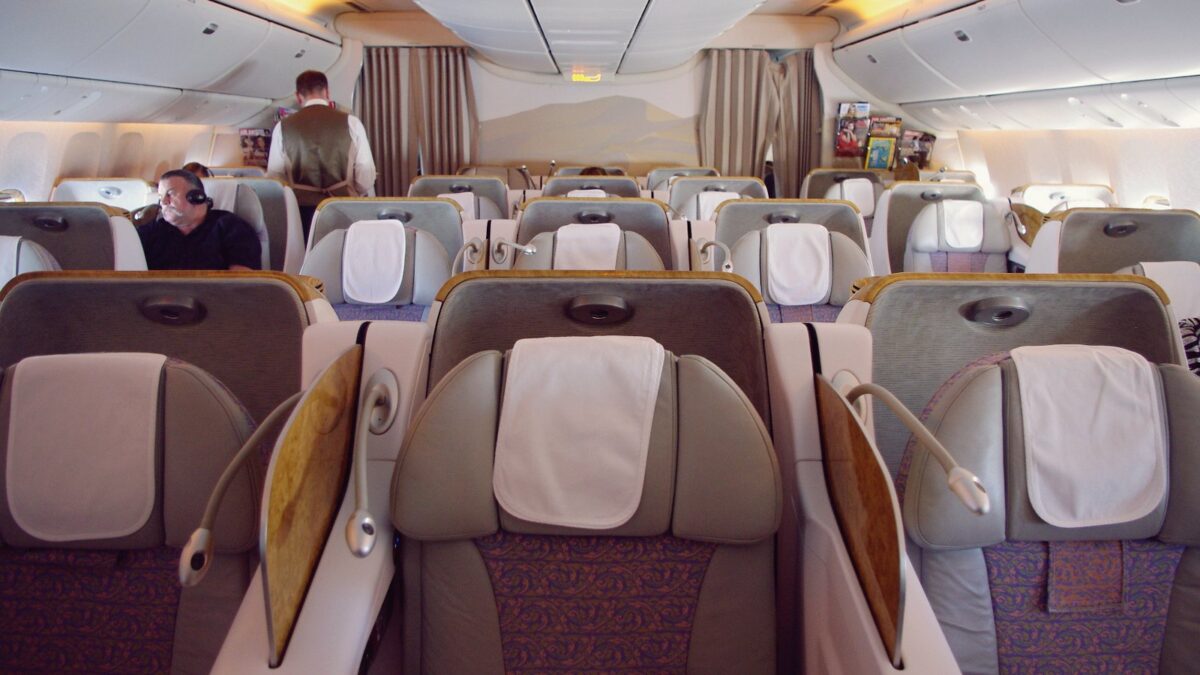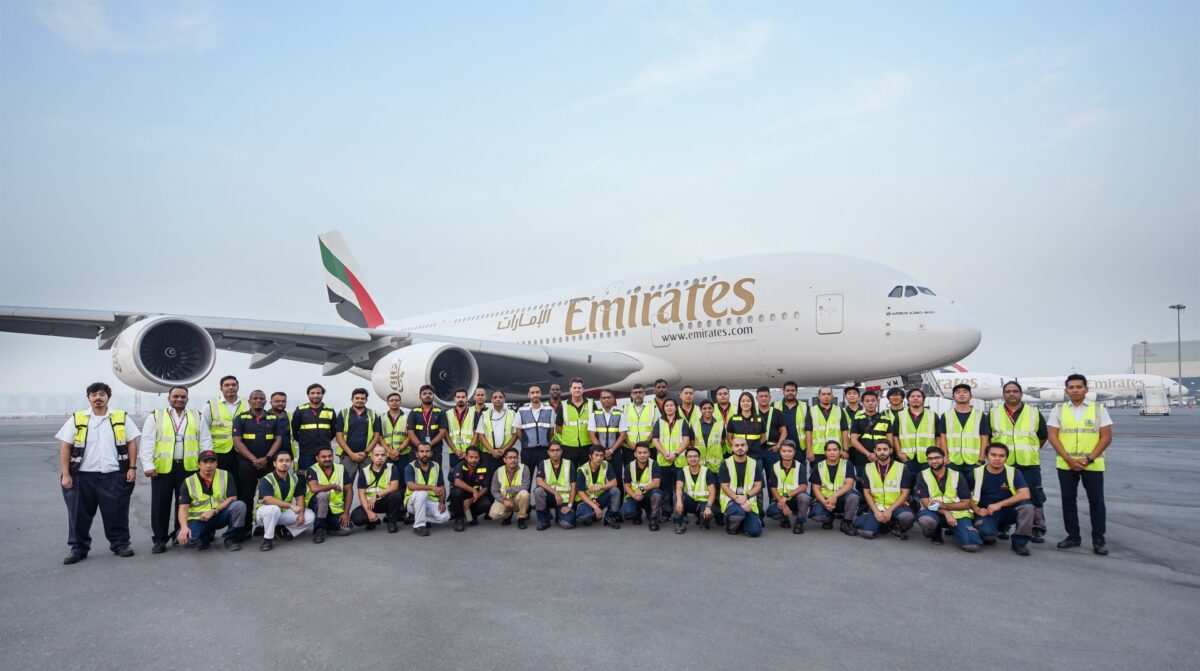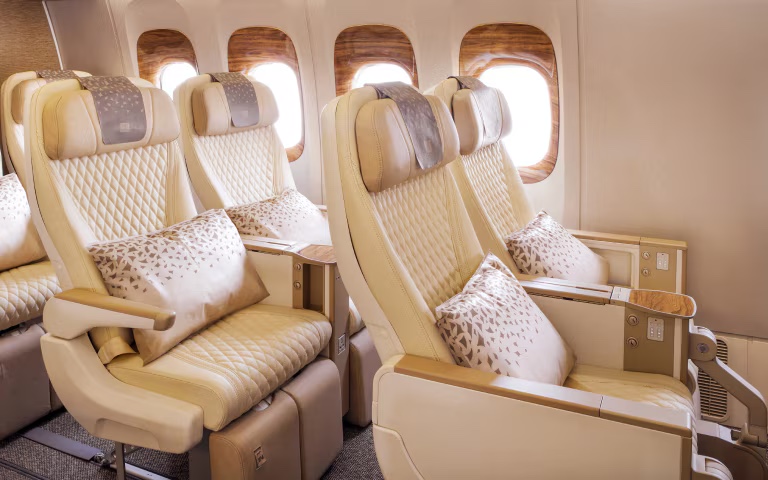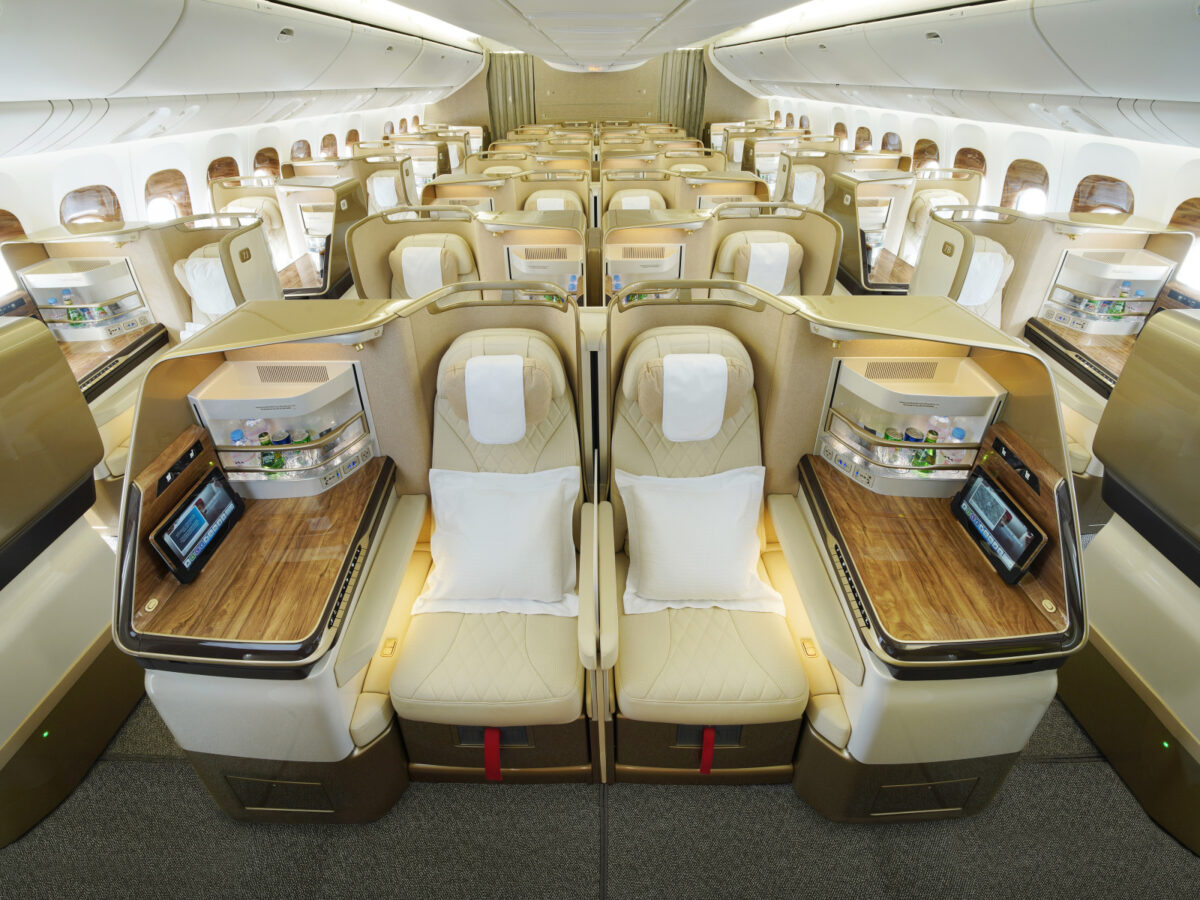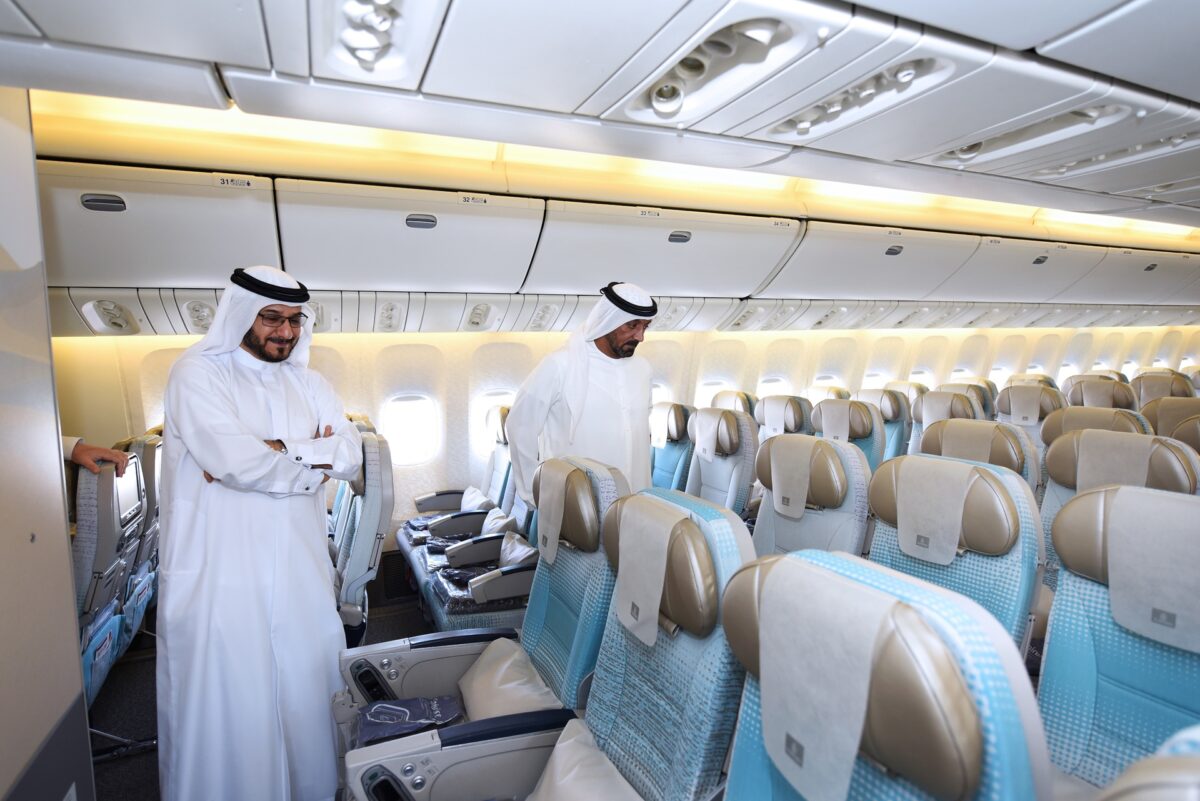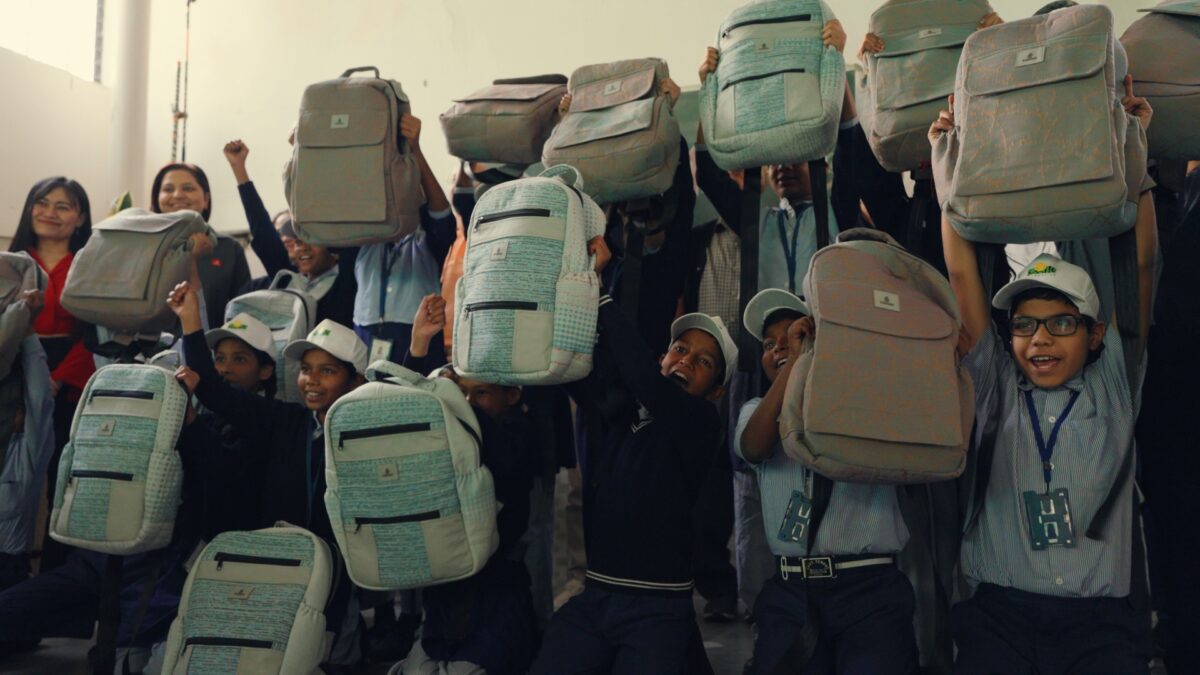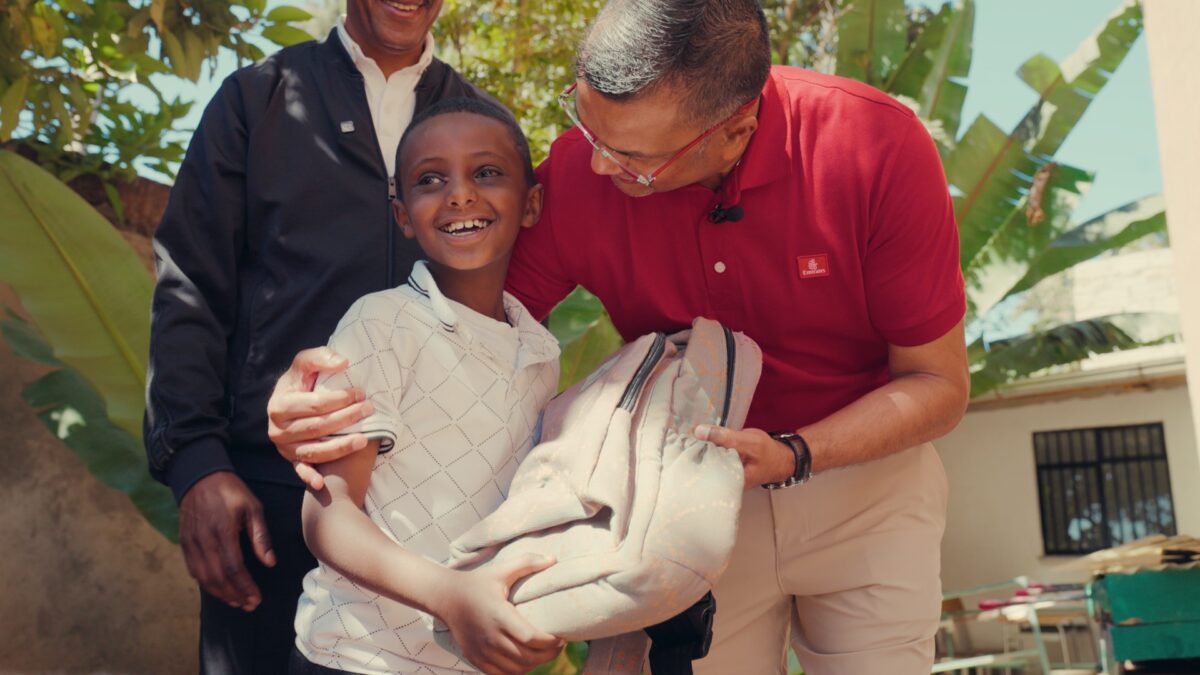Emirates is undertaking perhaps the most significant aircraft refurbishment project in the history of aviation. Over the next few years, the carrier will complete nose-to-tail refreshes on over 200 widebody aircraft, including the largest passenger jet, the Airbus A380. The investment required runs to an eye-watering $5 billion.
Refitting aircraft this large is never an easy task. When you’re trying to do it in a way that doesn’t interfere with a very busy flying schedule, it becomes even trickier. AeroTime sat down with Emirates’ Head of Engineering and MRO, Ahmed Safa, to find out just what goes into such an immense project.
Why is Emirates refurbishing these older aircraft?
Long before the pandemic, Emirates had ordered Boeing’s 777-9 for its fleet, and was expecting initial deliveries to begin arriving in 2020. But COVID derailed supply chains, and Boeing’s in-house issues have further hindered the progress on the 777X program, with deliveries now expected in late 2026.
“A huge tranche of the 777s were supposed to be handed back in ‘22, ‘23, and ‘24, but knowing that we were going to be drastically impeded on capacity, it was appropriate for us to extend the leases,” Safa explained.
On the other side of the coin is Airbus and its A350s. “We should have had 21 aircraft by now,” Safa said. “Right now, we only have four.”
Originally, Emirates intended to refurbish 67 A380s and 53 777s. However, as the depth of the delivery delays became apparent, it extended the program to include an additional 43 A380s and 28 Boeing 777 aircraft in May 2024. During its recent earnings release, the airline indicated another 99 aircraft would also be added to the program.
“The additions to the modification program were primarily driven by the lack of new aircraft,” Safa said.
With the aircraft staying for longer, attention turned to the state of the cabins. The 777s, in particular, were known for their unusual 2-3-2 layout in business class – not a passenger pleaser when most airlines are pitching direct aisle access in business.
“The industry expects that we continue to lead in the cabin and continue to perhaps deliver what is probably, in my humble opinion, the finest in the sky,” Safa said.
How to overhaul the biggest passenger planes in the world
“When we first pitched the idea and the full scope of the project, there was a look of fear in many eyes in that room,” Safa recalled with a chuckle. “If you were to express the project in a mathematical form, it would look like the most frightening, the most intimidating mathematical formula you’ve ever seen.”
Nobody in aviation has undertaken quite such an extensive refurbishment of the A380. There was no playbook for Emirates to follow; it is very much a pioneer in this activity.
“To refit the A380, you’re talking about 33,000 man hours, squeezed into the small space of the fuselage,” Safa explained. “It was originally designed to be accomplished in 16 days.”
To hone the process, Emirates grounded one A380 and assigned workers to each section of the aircraft. Over the next two months, engineers practiced their tasks on their individual sections of the aircraft over and over again, perfecting the flow until the project launched.
“The first aircraft took 60 days,” Safa said. “But that wasn’t because we didn’t do it right. It was because of the supply chain and certification issues. It took a long time to get the STC, but once we got that, we could speed up the process. Sure enough, we never did make the 16 days, but we do that work, those 33,000 man hours, in 21 days now.”
As well as the physical challenges of retrofitting these giant aircraft efficiently, there are capacity challenges, too. Few hangars in the world can accommodate the Airbus A380, and with ongoing wing inspections and repairs to take into account, the possibilities for taking more aircraft out of service for retrofits are limited.
“On any given day, I have up to 10 aircraft undergoing wing checks,” Safa explained. “Currently, we are restricted to upgrading during C checks only, which is slowing down the rate of upgrade. But still, we will continue to do what we can do.”
Safa added that by November or December this year, Emirates will have the capacity to ground an additional two aircraft over and above those having their C checks. This will enable the modification program to pick up speed. Still, it’s a delicate balancing act between capacity and speed of retrofits, which has to be carefully managed.
“It’s a very difficult, challenging, complex arrangement, but we have a plan, and we will plow through that plan,” Safa said. “We will make sure that we get through the entire upgrade, at least phase one, hopefully no later than the end of ‘26.”
What’s new on Emirates’ widebody aircraft?
For a passenger traveling on one of Emirates’ refurbished aircraft, the changes will be obvious. Everything is new, with different color palettes, new fabrics, and new seats. Gone is the iconic honey colored wood; in its place, a mix of teak and gray colored wood, something that Safa said has been a “phenomenal success.”
Introduced on the refurbished aircraft is Emirates’ stunning premium economy product, which helped drive the airline to record-high profits by the end of its 2024/25 financial year. In a statement in April, Emirates Chairman and CEO Sheikh Ahmed bin Saeed Al Maktoum said that the retrofit program would “expand our popular Premium Economy inventory to 2 million seats per year by end 2025.”
On the Boeing 777, Emirates is installing the highly anticipated new business class product. Gone is the dated 2-3-2 layout, replaced with an all-direct aisle access 1-2-1 arrangement. The seats are newly designed and are the same product that debuted on the Airbus A350, giving consistency across the fleet.
But not everything is brand new, even though it might look it. Challenges with supply chains meant Emirates was unable to introduce all the brand-new seats it wanted to. First and economy retain the same seat bases, but have had new fabrics and colors added to give the cabins a refresh.
“The expectation was that we could offer something that may not be a complete change, but will offer at least a visual difference and the comfort that people expect,” Safa explained. “But the next phase of the modification program will see the introduction of new seats, including new first class products.”
The refurbishment program is not a short-term task. While the modifications we’re seeing now are phase one, Emirates is already planning for phase six of the program. A priority in phase two will be an upgrade to the IFE system and modernized connectivity options.
“Ultimately, our goal is to deliver as much of a home experience as possible,” says Safa. “That’s no easy feat; to get full stream-like connectivity throughout our network is very challenging, but we’re undaunted by the challenge, and we will do whatever we have to do and spend whatever we have to spend to make sure that we offer the best of the best.”
What happens to the old interiors?
Sustainability is a major priority for any airline, and Emirates has thrown its hat firmly in the green ring with many of its investments. It has a $200 million sustainability fund, and dedicates 7% of its profits to sustainability initiatives.
In November 2023, the airline operated its first 100% SAF flight on an A380, using sustainable fuel in one of its four engines. And it has adopted Green Operating Procedures in a bid to reduce CO2 emissions, which it says is reducing fuel burn by 48,000 tons a year.
The retrofit project is taking a little weight off the aircraft – a crucial measure to meaningful reductions in fuel burn and greenhouse gases. Lighter seat parts, sub-assembly parts, and materials are adding to the sustainability push.
“But the biggest contribution to the green effort and sustainability is not from the refurbishment itself,” Safa explained. “It is actually probably better assessed in how we repurposed and upcycled the removed parts, the surplus parts, and the scrap parts.”
Rather than simply disposing of the materials and items removed from the aircraft. Emirates has embarked on a groundbreaking upcycling project it calls Aircrafted by Emirates. All sorts of materials have been repurposed into luggage and bags, from aluminium headrests, to leather from couches in the A380 onboard lounge, to seatbelts and even fur from the Captain’s seat.
From 16 retrofitted aircraft, more than 14,000 kg (31,000 lbs) of materials have already been recovered. As the project continues, there is scope to recover up to 270 kg (600 lbs) of leather and 627 kg (1,400 lbs) of seat fabric per retrofitted aircraft.
“My mandate to the guys is that everything you see around you in the cabin that is destined for scrappage must be targeted for an upcycling activity of some sort,” Safa explained.
Starting with the easier stuff – the leathers and fabrics, the carpets and curtains – Emirates created a range of suitcases, backpacks, handbags, cardholders, toiletry bags, belts and even shoes – all designed and handmade by Emirates tailors in a dedicated cabin workshop.
The next stage is to employ the appropriate skill set to look at more solid elements in the cabin like the aluminiums, thermoplastics and composites. Safa hopes to produce even more interesting items, hinting at furniture and maybe even bicycles in the future.
The luggage and accessories are available to buy in the Emirates store, but what we see there is just a fraction of what’s being produced.
“When we first pitched the idea of recycling, we were inundated with interest from companies who really wanted to just take the stuff and then repurpose it and sell it for profit, and that went against the intent of our mission,” Safa said. “What we want to do is contribute to society at large, where these things may be required for a greater purpose.”
To date, the airline has donated hundreds of thousands of products to schools, communities and NGOs in countries including South Africa, Zimbabwe, Ethiopia and Zambia. Emirates wants to reach more people and is targeting recipients in India, Pakistan, and Egypt for its next donations.
“The purpose was not to sell, but to give and contribute and draw the smiles on all these beautiful faces,” Safa said. “There will be a select few items that will be available on sale, but the majority are destined and designed to be donated.”
With its massive retrofit project, Emirates is seeking not only to improve its already incredible product but also to make the world a slightly better place.


